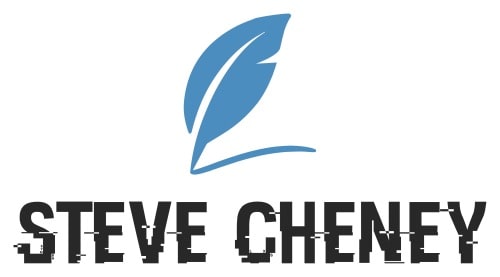Are you planning to pursue a career in cosmetology?
We live in an era where physical appearance has become a self-expression and identification. The beauty industry is flourishing, and people focus on how they look as part of the value they hold for themselves. Moreover, if you make it, you might work with Hollywood celebrities.
But before you can become a successful hair stylist, makeup artist, or esthetician, a critical question arises: how much is cosmetology school?
Becoming a licensed cosmetologist opens numerous doors to lucrative money-making opportunities. Education hones your skills and provides the right props to compete in a highly competitive market.
So, if this sounds like something you want to do, this article is for you. This article will break down the costs of cosmetology education. So, let’s dive in.
How Much is Cosmetology School?
Becoming a certified and licensed cosmetologist in the US can cost between $5000 and $15,000, with some schools costing more than $20,000.
Basic tuition represents a significant percentage of this cost. A cosmetic kit, including all the tools and materials you’ll need for practical application and practice, can cost between $1500 and $3000. The cost of a license is about $60, subject to renewal. It differs from one state to another.
The average cost depends on several factors.
The Type of School You’re Attending
Local community colleges can cost anything between $5000 and $15000. They offer primary education and training to start your career as a professional cosmetologist.
Private schools can be more expensive. But they’re worth it.
These schools offer more extensive and specialized programs. Moreover, their certificates are well-recognized in the industry. Many students get internships and training opportunities while they’re still studying, where they can work in the entertainment industry or with one of the leading brands in the world of beauty.
Reputation and Quality
Some schools are more recognized in the business. This means you’ll probably be approached by industry leaders like beauty brands while studying for internship opportunities.
Choosing a reputable school comes with a price, though. You’ll be taught and trained by the most qualified people in the business, and attending such a well-known school will offer massive networking opportunities with seasoned professionals.
Yet, attending a course at one of these schools costs more. Here are some of the most well-known and expensive cosmetology schools.
Paul Mitchell Schools
Paul Mitchell Schools are available at 100 locations in the US. This school offers education programs to students and instructors who want to teach in cosmetology schools.
The brand already has several successful products and is available at many trade shows and creative events. The school provides hands-on training in a real-life setting, like a movie set or a fashion show.
Most programs cost an average of between $15,000 and $25,000 but are multifaceted, providing students with everything they need to know about the topic they chose to study. Students can also apply for financial aid to cover some or all of their tuition fees.
Aveda Institutes
As the world is more concerned with sustainability, Aveda Institutes offer educational programs to train future beauty artists focusing on clean and ethical practices.
This network of schools teaches a holistic approach to beauty education, using environmentally friendly materials. In addition to the standard beauty-related topics, students can also study massage therapy and marketing skills.
Before joining any school in the US or Canada, make sure you understand what is included in the program because they differ by location. An average full-time study program costs between $15,000 and $25,000.
The Hollywood Institute
Students at this school can study different programs that teach the needed skills to help them succeed in the beauty and wellness business. This institute is credited by the National Accrediting Commission of Career Arts & Sciences and offers well-recognized certifications that cover different aspects of the beauty industry.
Many students attend this school because they can get their degree in 10 months if they attend full-time. It costs about $10,000.
However, you’ll receive only 1200 hours of education. If this doesn’t meet the minimum license requirements in your state, you’ll have to consider an apprenticeship program to get licensed.
Books and Supplies
The price of books you’ll need for your studies varies by school, but they can be anything between $2000 and $3000. The supplies and tools you’ll need for studying and practice will cost between $1500 and $3000. These include the cost of mannequins, scissors, combs and brushes, hot styling tools, makeup kits, makeup brushes, and aprons.
Location
Believe it or not, you can pay half the price of education by attending school in a different state. For example, a cosmetology student will pay an average of $8145 per year in Alaska, while they’ll pay about $16,208 in Georgia.
Attending school in Alaska, Alabama, Kentucky, Louisiana, Massachusetts, Mississippi, South Dakota, and Wyoming can result in significant cost savings. Schools are more expensive in California, Connecticut, Colorado, Nebraska, Nevada, New Hampshire, New Jersey, Ohio, Iowa, and Mayland.
Still, compared to other public and private schools, getting a degree in cosmetology is more affordable.
The location you pick will add up to your transportation costs. For example, if you choose a college in a different city, you’ll spend more money on bus tickets or gas for your car. You might also have to rent a new place if you don’t want to drive to and from school daily.
Program You Study
Cosmetology schools offer several study programs that come at different prices. The costs of these programs vary due to the demand and average salary of various cosmetology-related jobs.
For example, if you plan on becoming a nail technician or esthetician, you can expect to pay towards the lower end of the average. Hairstylist training tends to be more expensive.
How Many Hours of Education Do I Need?
While comparing the costs of different programs is crucial in selecting the school where you’ll attend college, you should also consider the number of hours.
Getting a license in different states requires various hours of training. So, if your education doesn’t meet the minimum state requirements for licensing, you’d be wasting your time and money. Here are some examples.
- In Alabama, you’ll need 1000 hours to become a Class II Barber. A cosmetologist or esthetician needs 1500 or 3000 apprenticeship hours, and a nail technician needs 750 or 1200 apprenticeship hours.
- In Arizona, you’ll need 1500 hours to get licensed as a barber, 600 hours to become a licensed esthetician, and 1600 hours to become a cosmetologist.
- In California, you’ll need 1500 hours to become a licensed barber, 600 hours to become a licensed esthetician, 600 hours or a 2-year apprenticeship to become an electrologist, and 1600 or 3200 apprenticeship hours to become a licensed cosmetologist.
- In Hawaii, you’ll need 1500 hours to become a licensed barber, 550 or 1100 apprentice hours to become an esthetician, and 1800 or 3600 apprenticeship hours to become a cosmetologist.
How Can I Reduce the Cost of My Cosmetology School?
Most cosmetology schools accept Federal Financial Aid just like traditional colleges. This helps reduce education costs, making it more accessible to low-income individuals. You can also apply for a scholarship to receive a 100% or partial tuition fee relief.
Several types of Federal Financial Aid programs are available.
Grants
This financial aid must not be repaid unless you withdraw from school. You can receive grants from the Federal Government, state government, school, or any public or private organization.
Determining your eligibility for a grant depends on your financial status and the documents you provide. Students can apply for Pell Grants, FSEOGs, TEACH grants, and Iraq and Afghanistan service grants.
Scholarships
Public and private non-profit organizations offer scholarships to help aspiring and hard-working students reach their academic goals. Industry leaders, high-profile names in the cosmetology industry, schools, and private employers design scholarship programs based on merit or talent.
Once a scholarship is announced, you can apply. If you’re eligible, someone else will pay for your education to help you get certified as a professional cosmetologist.
You can also talk to your high school counselor, contact beauty salons in your area to see if they offer scholarships, head to different beauty schools and ask if there are any, or search Google.
Work-Study Funds
The Federal Work-Study Program allows you to work part-time to earn enough to cover your school expenses. This program guarantees you’ll earn at least the federal minimum wage, but you can earn more depending on your skills and work type.
Many students prefer this option because it provides hands-on training. It prepares them for the challenges they will encounter when working professionally.
Typically, your salary depends on when you apply, the funding your school provides, and your level of financial need. You can’t work extra hours because your school will assign work hours based on your study schedule.
Loans
Students and parents can apply for student loans from banks and public and private organizations. Then, they’ll have to repay them using a low interest rate.
Federal student loans offer more favorable interest rates than those you can get from the bank. Nevertheless, many students struggle to repay their debt for years after graduation.
It’s essential to know all your repayment options to be able to pay back your student loan. This loan won’t be canceled even if you drop out of school or fail to graduate.
Wrap Up
Attending cosmetology school can cost as little as $5000, with some schools’ fees reaching more than $20,000. The cost of the education program depends on several factors you should consider before enrolling.
Luckily, several options exist, so you should compare various programs before enrolling in one. Students can apply for financial aid to help cut down their education fees.









